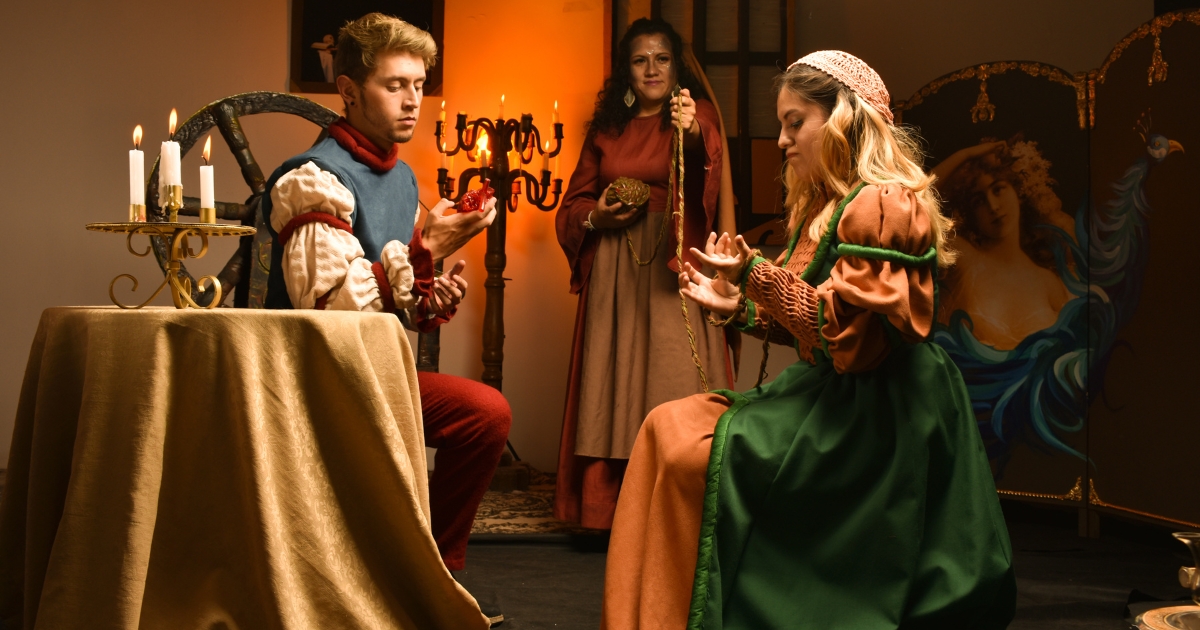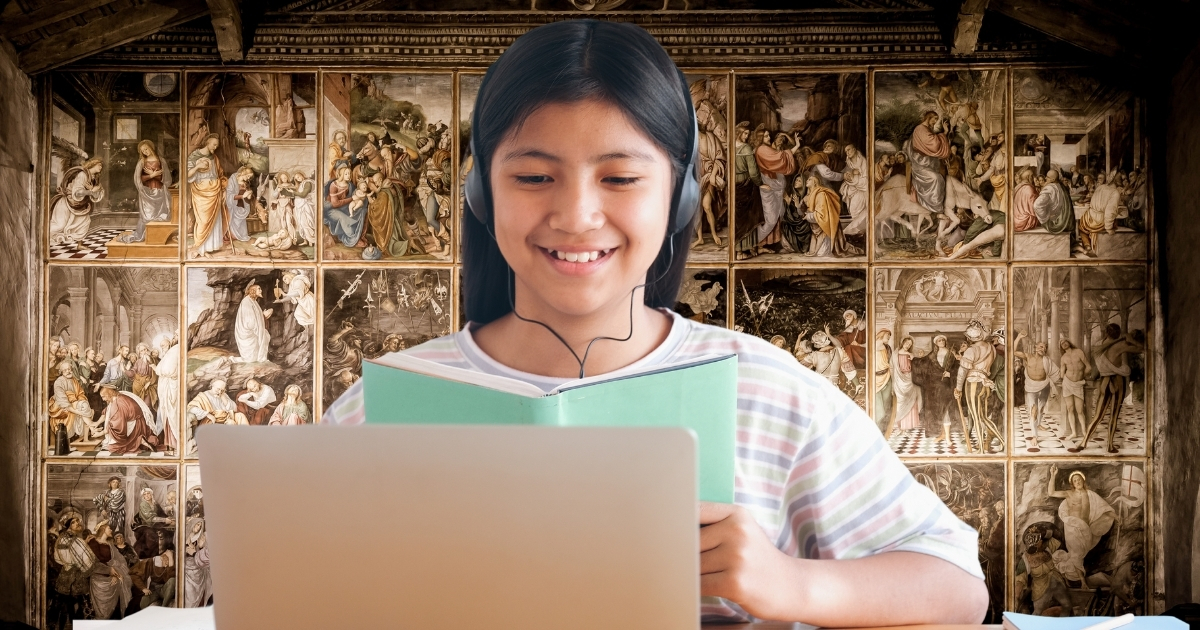The Renaissance was an extraordinary period of cultural, intellectual, and artistic awakening that forever changed the course of history. Teaching your child about it at home offers a unique opportunity to ignite their curiosity and creativity while providing a window into one of history’s most fascinating eras.
If you’re looking for the best ways to teach Renaissance history at home, there are plenty of creative, engaging, and practical methods to make this period come alive in your homeschool curriculum.
Understanding The Renaissance Through Stories And Context
Before jumping into the complexities of Renaissance art and science, it’s helpful to first set the scene. Explain to your child that the Renaissance, which means “rebirth,” spanned approximately from the 14th to the 17th century and marked a shift from medieval times to the early modern world. It was a time of renewed interest in the classical ideas of ancient Greece and Rome, and it brought advancements in literature, arts, science, and exploration.
To lay this foundation, you can:
- Discuss key historical events that led to the Renaissance, such as the fall of Constantinople in 1453 or the invention of the printing press by Johannes Gutenberg.
- Explain why cities like Florence, Italy became hubs of culture and innovation.
- Highlight influential patrons like the Medici family, who played a key role in funding and supporting Renaissance artists and thinkers.
Stories are a powerful tool for connecting children to history. Share engaging narratives about Renaissance figures, such as:
- Leonardo da Vinci, the celebrated polymath whose notebooks contained sketches of flying machines and detailed studies of anatomy.
- Michelangelo, who spent years painting the Sistine Chapel ceiling and carving masterpieces like the statue of David.
- Galileo Galilei, whose telescope helped challenge centuries-old views of the universe.
Using interactive resources can make this introduction even more engaging. Look for books like DK Eyewitness Books or the Horrible Histories series for an age-appropriate, fun introduction to the Renaissance. Documentaries and online videos from educational platforms can also visually illustrate the timeline and major figures of the era.
By immersing your child in the stories and context of the Renaissance, you establish a solid base of understanding that will make exploring its various elements more exciting and meaningful.
Exploring Renaissance Art And Activities
Art was one of the most defining features of the Renaissance, and it’s a fantastic way to involve your child in hands-on learning. A look at famous works can reveal not just artistic talent, but fascinating insights about the culture, religion, and science of the time.
Introduce Iconic Renaissance Artworks
Start by giving your child a virtual tour of some of the most iconic pieces of Renaissance art. Discuss the significance behind these works:
- The Mona Lisa by Leonardo da Vinci, known for its groundbreaking use of perspective and lifelike detail.
- Michelangelo’s David, a masterpiece of sculpture that showcases the Renaissance focus on human anatomy.
- Botticelli’s The Birth of Venus, celebrating mythology and the beauty of the natural world.
Talk about the techniques Renaissance artists used, such as:
- Perspective to give paintings depth and realism.
- Chiaroscuro (the use of light and shadow) to create dramatic effects.
- A focus on human anatomy, which made their work more lifelike than anything seen before.
Engage Through Artistic Activities
Turn art exploration into hands-on learning with these ideas:
- Encourage your child to try sketching with charcoal like a Renaissance artist.
- Experiment with making simple tempera paint (a popular medium at the time) using egg yolks and natural pigments.
- Have your child recreate a famous artwork or develop their own story-inspired piece.
For added fun, bring the Renaissance to life with a family activity:
- Host a mini Renaissance fair at home. Dress up in costumes, whip up traditional foods, and stage performances of Renaissance music or simple plays.
Online tools can enrich your lessons further. Many museums, like the Uffizi Gallery in Florence or The Louvre, offer virtual tours where your child can explore Renaissance art collections right from your living room.
Art not only enriches your child’s understanding of Renaissance culture but also inspires creativity and provides a deeper emotional connection to the material.

Engaging With Renaissance Science And Innovation
While the Renaissance is often celebrated for its art, it was also a time of groundbreaking scientific discovery and invention. This is a great opportunity to show your child how the pursuit of knowledge and curiosity reshaped the way people understood the world.
Explore Revolutionary Thinkers
Introduce your child to key scientists of the Renaissance, such as:
- Nicolaus Copernicus, who proposed the heliocentric model that placed the sun, not Earth, at the center of the universe.
- Galileo Galilei, who revolutionized astronomy with his improved telescope and bold ideas that defied long-held beliefs.
- Johannes Gutenberg, whose invention of the printing press changed how ideas traveled and spread knowledge throughout Europe.
Pair these lessons with tangible comparisons to modern-day technology. For example, discuss how books are mass-produced today and what reading might have been like before the printing press.
Hands-On Experiments
Bring scientific concepts to life with fun, simple projects:
- Create a small hand-cranked printing press with everyday materials to demonstrate how Gutenberg’s design worked.
- Experiment with gravity by dropping objects of different weights, replicating Galileo’s ideas about the force of gravity.
- Chart the movements of the planets as Copernicus described to give your child a visual understanding of heliocentrism.
Working together on science-themed activities encourages curiosity and deepens their appreciation for how Renaissance thinkers shaped the modern world.
Online learning tools can also provide interactive experiences. Virtual museums like the Science Museum in London often feature exhibits on the Renaissance’s scientific achievements. These resources can help explain big ideas in an accessible way.
Applying Renaissance Lessons To Modern Learning
The ideals that emerged during the Renaissance can go beyond history lessons—they can also inspire your child’s approach to learning in general.
Here’s how you can apply Renaissance themes to your homeschool routine:
- Foster a love of learning: Renaissance humanism celebrated education, exploration, and improvement. Encourage your child to explore various subjects—not just history, but art, math, science, and more.
- Encourage creativity and innovation: Like Renaissance thinkers, support your child’s efforts to create and innovate. Whether they love drawing, writing stories, coding, or inventing gadgets, find ways that fit their interests.
- Balance the subjects: Borrow from the Renaissance’s interdisciplinary approach by connecting subjects. For instance:
- Discuss the math behind perspective in art.
- Link scientific discoveries from the Renaissance to philosophical or religious debates of the time.
- Collaborate and build community: Learning during the Renaissance thrived on collaboration. Engage with other homeschooling families or online groups for joint projects. Team environments can invigorate your child’s enthusiasm and teach them the value of diverse ideas.
- Celebrate individuality: The Renaissance was heavily driven by personal achievement and self-expression. Let your child pursue independent study projects where they can explore topics they’re passionate about.
By weaving Renaissance ideals into your approach, your child gains more than academic knowledge—they build skills and mindsets that will serve them for life.
Teaching Renaissance history at home is an enriching experience that combines exploration, creativity, and discovery. Whether you’re studying famous art, replicating scientific experiments, or drawing lessons from Renaissance values, this era offers endless opportunities for fun and insightful learning. By using these best ways to teach Renaissance history at home, you’ll be engaging your child in an exciting educational adventure they’ll never forget.


